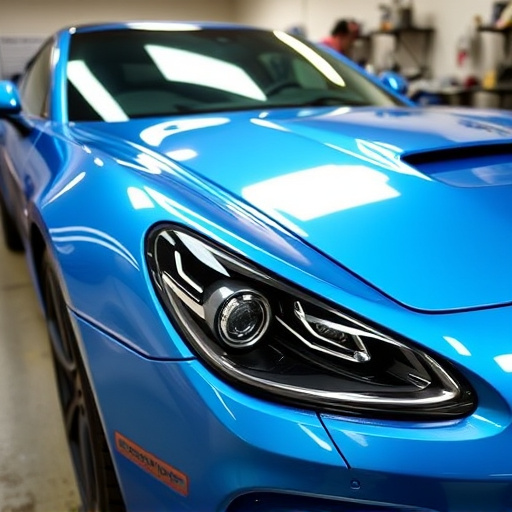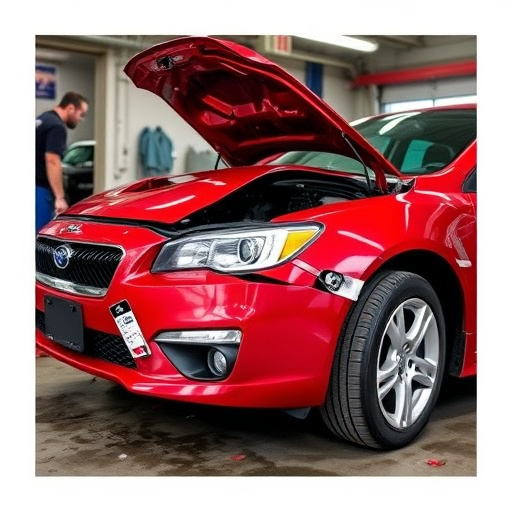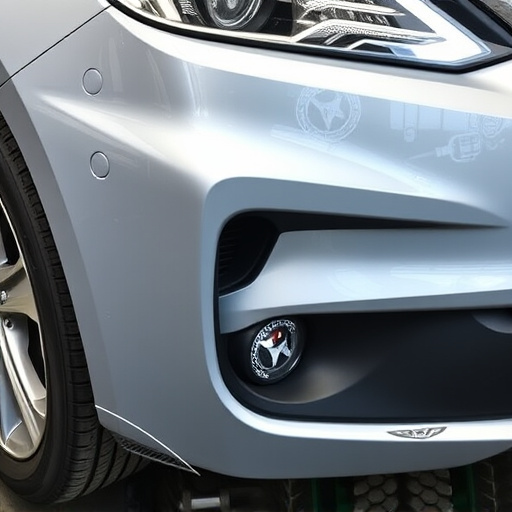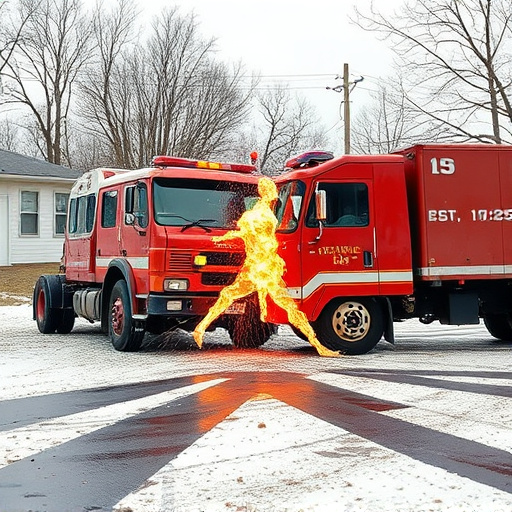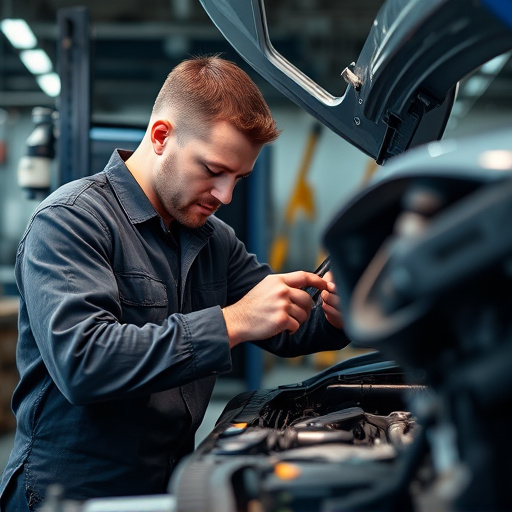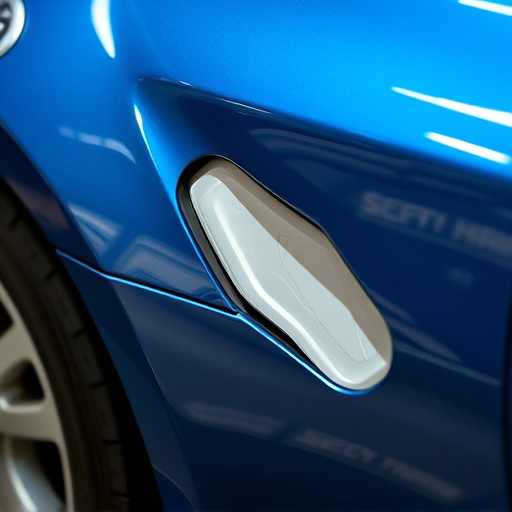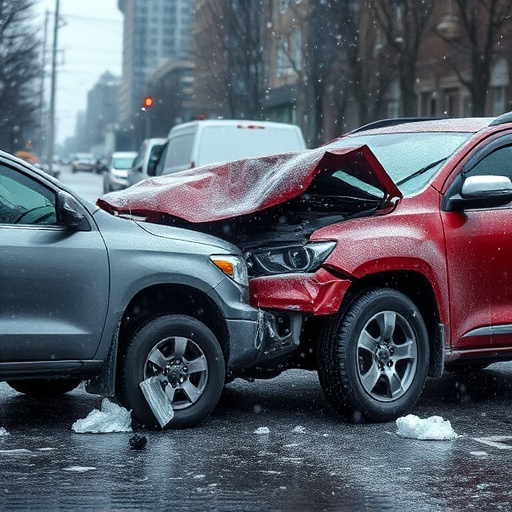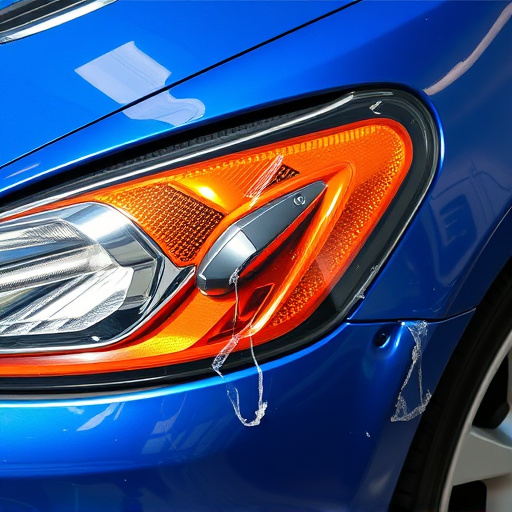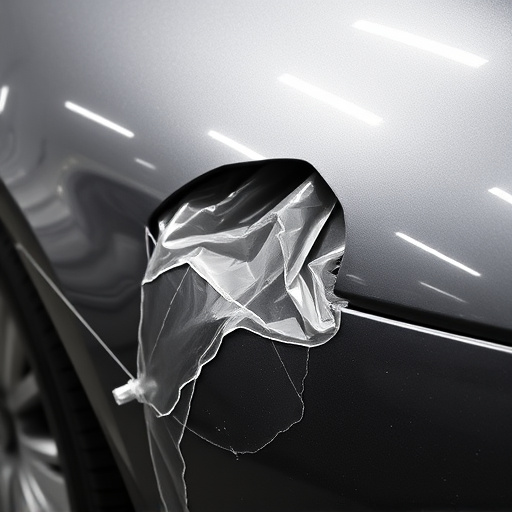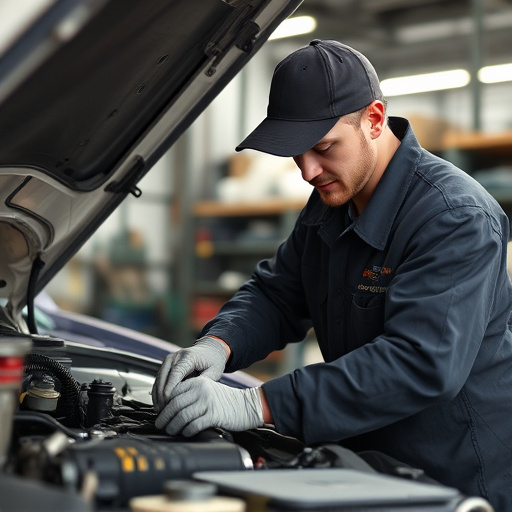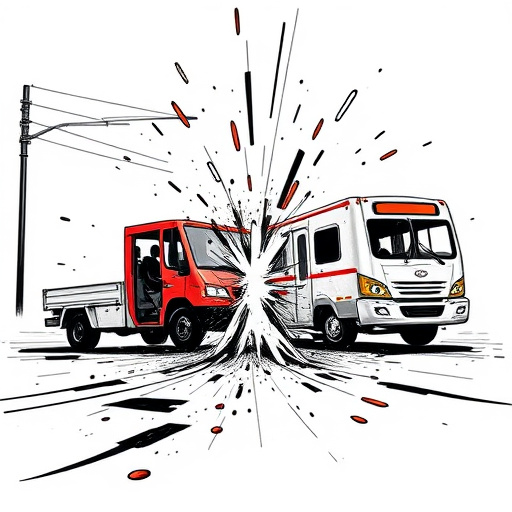Mercedes radar recalibration is crucial for maintaining advanced driver-assistance systems (ADAS) accuracy and efficiency after potential sensor performance disruptors like weather, road debris, or minor collisions. This meticulous process ensures reliable collision prevention and enhanced safety in adverse conditions, especially vital after repairs from hail damage or car collisions. Best practices include using certified tools, thorough bodywork preparation, referencing original design data, maintaining clean environmental conditions, and regular calibration checks.
Mercedes radar recalibration is a critical process that aligns the radar angles with original equipment manufacturer (OEM) specifications. This ensures optimal performance and accuracy in advanced driver-assistance systems (ADAS). By understanding the recalibration process, highlighting its benefits, and following best practices, vehicle owners can enhance safety features like adaptive cruise control and lane keeping assist. These steps are crucial for maintaining the integrity of Mercedes’ cutting-edge radar technology.
- Understanding Mercedes Radar Recalibration Process
- Benefits of Aligning Radar Angles to OEM Specs
- Best Practices for Accurate Mercedes Radar Calibration
Understanding Mercedes Radar Recalibration Process
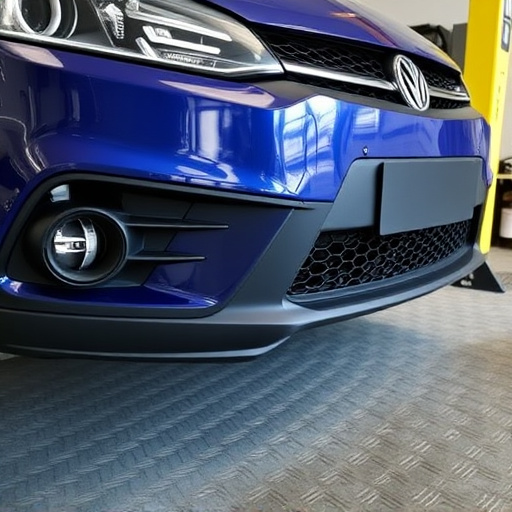
Mercedes radar recalibration is a meticulous process that aligns the radar angles of a Mercedes vehicle with the original equipment manufacturer (OEM) specifications. This critical procedure ensures the safety and efficiency of advanced driver-assistance systems (ADAS). Over time, various factors such as weather conditions, road debris, or even minor car collisions can impact the accuracy of these sensors.
During a Mercedes radar recalibration, specialized tools are used to assess and adjust the sensor’s positioning and orientation. Technicians carefully inspect each radar unit for any signs of damage or calibration drift. This meticulous process involves precise adjustments to ensure the radar accurately detects objects at different distances and angles. Proper recalibration is crucial, especially after incidents like hail damage repair or car collision repair, as it restores the system’s reliability in preventing potential accidents and enhancing overall vehicle safety, particularly during adverse weather conditions when hailstorms or heavy rain might obscure sensor readings.
Benefits of Aligning Radar Angles to OEM Specs

Mercedes radar recalibration plays a pivotal role in ensuring optimal vehicle performance and safety. By aligning radar angles with Original Equipment Manufacturer (OEM) specifications, several key benefits are realized. Firstly, it enhances the accuracy of distance and speed detection, which is crucial for advanced driver-assistance systems (ADAS). This precise data enables features like adaptive cruise control to function seamlessly, improving overall driving comfort and security.
Moreover, proper radar alignment contributes to enhanced collision avoidance systems, allowing the vehicle to accurately detect potential hazards from various angles. This is particularly important in complex urban environments where multiple objects, including other vehicles and pedestrians, move at varying speeds. In the event of a fender repair or automotive body work, ensuring that the radar system is recalibrated according to OEM standards is vital for maintaining these safety features’ effectiveness. Mercedes benz collision repair professionals understand this, making recalibration a standard part of their post-repair procedures.
Best Practices for Accurate Mercedes Radar Calibration
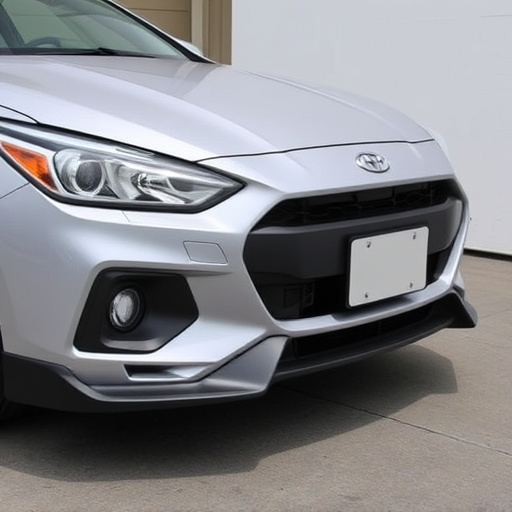
To achieve accurate Mercedes radar calibration, several best practices should be followed. First and foremost, ensure that all tools and equipment used are certified and up-to-date, aligning with the latest OEM (Original Equipment Manufacturer) specifications. This includes using specialized scanners capable of accurately adjusting radar angles and sensitivity levels. The vehicle’s bodywork must be meticulously prepared, with any potential interference or damage to the radar sensors addressed before recalibration.
During the process, it’s crucial to reference original design data and diagrams provided by Mercedes-Benz. This ensures that each adjustment is made precisely according to the manufacturer’s guidelines. Additionally, proper environmental conditions—such as a clean, dust-free interior and controlled temperature—are vital for accurate readings. Lastly, regular calibration checks and adjustments post-realignment are recommended to maintain optimal radar performance over time, reflecting in enhanced vehicle safety and operational efficiency.
Mercedes radar recalibration is a precise process that ensures the vehicle’s radar system functions optimally. By aligning radar angles with original equipment manufacturer (OEM) specifications, drivers can experience enhanced safety features, improved accuracy in distance detection, and better overall performance. Following best practices for accurate calibration, such as using reputable tools and following step-by-step guides, is crucial to achieving reliable results. This ensures that the Mercedes radar system operates at its highest level, providing peace of mind on the road.

